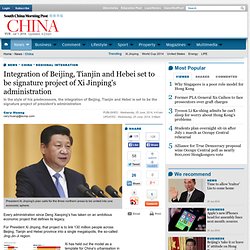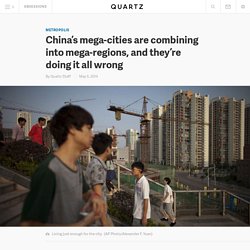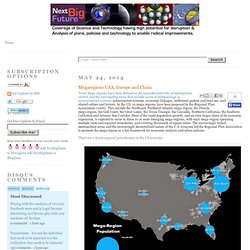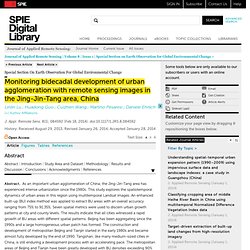

Enablers and drivers for future superlarge 500 million person Metacities. President Xi Jinping has a signature project to link 130 million people across Beijing, Tianjin and Hebei province into a single megalopolis, the so-called Jing-Jin-Ji region.

Xi has held out the model as a template for China's urbanisation in the future. For the project to work, he will need to align policy and interests that are often in conflict - ones that touch on urban planning, industry, state and private enterprises, and environmental protection. It's a potent challenge, but analysts say Xi's recent move to consolidate his power could give him enough leverage to rein in the competing interests, and see the vision realized.
Xi's plan calls for the three northern areas to be united into one economic sphere. The Bohai Bay area would become a key growth plank, similar to the Yangtze River Delta and Pearl River Delta. Previously there had been talk of 260 million people getting integrated in the Bohai area by 2020. Integration of Beijing, Tianjin and Hebei set to be signature project of Xi Jinping's administration. Every administration since Deng Xiaoping's has taken on an ambitious economic project that defines its legacy.

For President Xi Jinping, that project is to link 130 million people across Beijing, Tianjin and Hebei province into a single megalopolis, the so-called Jing-Jin-Ji region. Xi has held out the model as a template for China's urbanisation in the future. For the project to work, he will need to align policy and interests that are often in conflict - ones that touch on urban planning, industry, state and private enterprises, and environmental protection.
It's a potent challenge, but analysts say Xi's recent move to consolidate his power could give him enough leverage to rein in the competing interests, and see the vision realised. Xi's plan calls for the three northern areas to be united into one economic sphere. The northern cluster lags the deltas in development of private enterprise, lacks their cohesive industrial base, and is less open to the outside world. China’s mega-cities are combining into mega-regions, and they’re doing it all wrong - Quartz. This item has been corrected.

You may never have heard of the southwestern Chinese city of Chongqing, but by some measures it is one of the largest and fastest-growing cities in the world, with an official population of 29 million—about the same as Saudi Arabia—and unofficial population of 32 million or more. The city center of Chongqing boasts a mere 9 million people, but dozens of satellite districts such as Fuling (population 1 million) and Wanzhou (1.6 million) are each major cities in their own right.
In total, Chongqing covers an area the size of Austria, and it’s about to become part of a mega-region that is even larger, part of move in China to create the biggest urban municipalities on Earth. Chongqing, for example, will be part of the even larger Chuanyu mega-region, which also includes the major city of Chengdu and 13 cities from Sichuan province.
Unfortunately it doesn’t appear that China is following the advice of urban planners like Marcuson. Megaregions USA, Europe and China. TweetMega-regions have been defined as the extended networks of metropolitan centers and the surrounding areas that include layers of relationships in environmental systems, infrastructure systems, economic linkages, settlement pattern and land use, and shared culture and history.

In the US, 10 mega-regions have been proposed by the Regional Plan Association (2006). They include the Northeast, Piedmont Atlantic mega-region, the Florida mega-region, the Gulf Coast, the Great Lakes, the Texas Triangle, the Cascadia, Northern California, the Southern California and Arizona Sun Corridor. Most of the rapid population growth, and an even larger share of its economic expansion, is expected to occur in these 10 or more emerging mega-regions, with each mega-region spanning multiple state and regional boundaries, and covering thousands of square miles.
There are a dozen regional powerhouses in the US economy. Similar mega-regions have been identified in EU. Europe megaregions - are listed here. Monitoring bidecadal development of urban agglomeration with remote sensing images in the Jing-Jin-Tang area, China. This study adopted an integrated approach of multitemporal remote sensing and multiscale spatial metric analysis to characterize the dynamics of urban expansion in the Jing-Jin-Tang urban agglomeration in the past 20 years (1990–2010).

The results from three sets of Landsat imagery show that the BU area in this region has undergone a substantial increase, especially in the late 1990s to early 2000s.